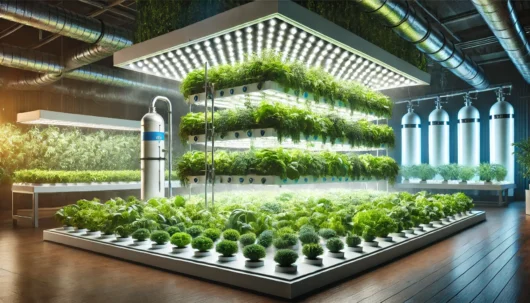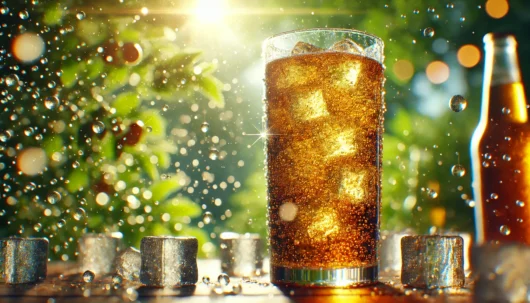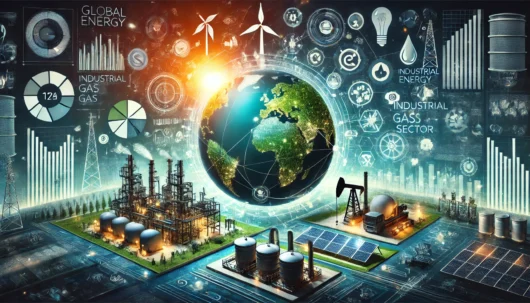The beverage industry’s carbon footprint is a significant issue that affects both the global and local economies. In 2021, beverage companies emitted 1.5 billion tons of CO2e, representing 3.8 percent of global CO2e emissions. Among these, the dairy sector alone accounted for a staggering 45 percent of the emissions. This makes the reduction of emissions in the beverage industry a crucial target for mitigating climate change and its economic repercussions. Beyond beverages, CO2 is a critical element in various industries, which compounds the economic impact of its production and emissions. Greenhouse gas emissions have been linked to trillions of dollars in global economic losses, with significant contributions stemming from leading emitters such as the U.S. and China. The economic impact of Beverage CO2 thus stretches far beyond the drinks industry, influencing sectors from agriculture to transport.
As market trends shift towards more sustainable practices, companies within the beverage industry are increasingly looking to reduce their carbon footprint. Initiatives like Heineken’s aim to achieve carbon neutrality by 2030 highlight the industry’s potential to adopt greener practices. These efforts are essential not only for environmental sustainability but also for reducing the broader economic impact driven by high CO2 emissions.
Industry Overview and Market Trends
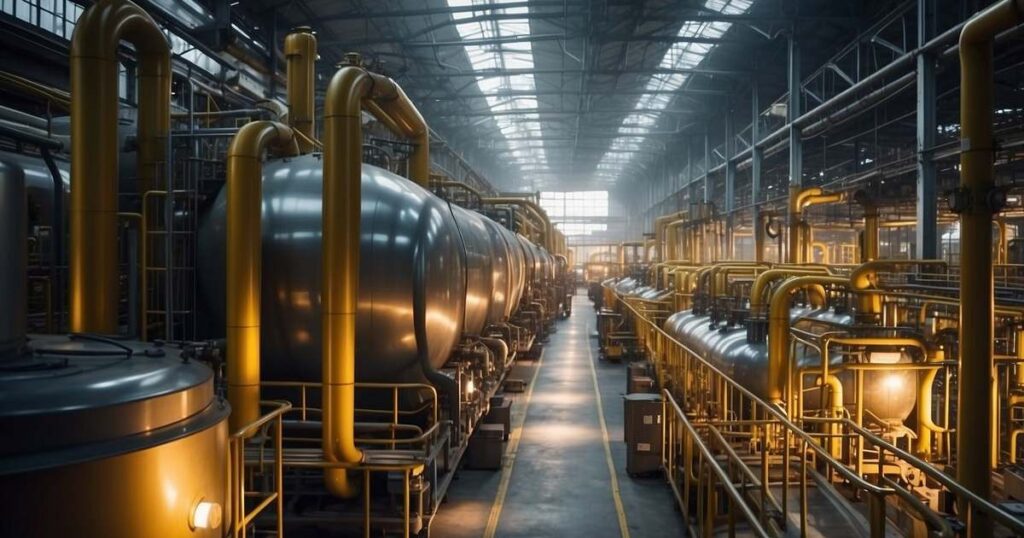
The beverage industry’s use of carbon dioxide (CO2) is significant, driven by the production of carbonated drinks and the brewing sector. Innovations and regulatory shifts continue to shape market dynamics and production practices.
Current Market Size and Growth
In 2020, the global carbon dioxide market was valued at nearly $9.68 billion. It has grown at a compound annual growth rate (CAGR) of 4.94% since 2015. North America and Europe are critical regions that contribute significantly to market shares.
The carbonated beverages market, including soft drinks and beer, was valued at $472.36 billion in 2022 and is projected to grow at a CAGR of 5.1% up to 2029. The CO2 market is on a path to reach $11 billion due to sustained demands and expanding beverage production globally.
Dominant Players and Industry Dynamics
Key players such as Anheuser-Busch InBev, Heineken, Carlsberg, Pepsi, and Coca-Cola dominate the market. Their strategies include securing CO2 supply chains and investing in sustainability.
Anheuser-Busch InBev and Coca-Cola lead in innovation and scale, leveraging extensive distribution networks. Heineken and Carlsberg focus on renewable energy and reducing environmental impacts. These companies drive industry dynamics with competitive pricing, brand loyalty, and market expansions.
Innovation and Advances in Production
Beverage companies are integrating direct air capture technologies to source CO2 sustainably. Innovations include using renewable energy to power production facilities and improve energy efficiency.
Firms like Coca-Cola are exploring new carbonation techniques to reduce CO2 use per unit. The adoption of closed-loop systems for carbon capture and reuse is growing, supported by partnerships with tech firms specialising in carbon management solutions.
Regulatory Landscape
Regulations play a vital role in shaping industry operations. The European Commission enforces stringent measures to curb CO2 emissions. Compliance with these regulations requires companies to adopt sustainable practices and invest in green technologies.
In North America, environmental policies also incentivise the reduction of carbon footprints through tax credits and subsidies. Beverage companies must navigate these regulations to maintain market competitiveness while contributing to environmental sustainability.
In summary, the beverage industry’s CO2 market is influenced by continued growth, key industry players, innovative production technologies, and rigorous regulatory frameworks.
Environmental and Economic Implications
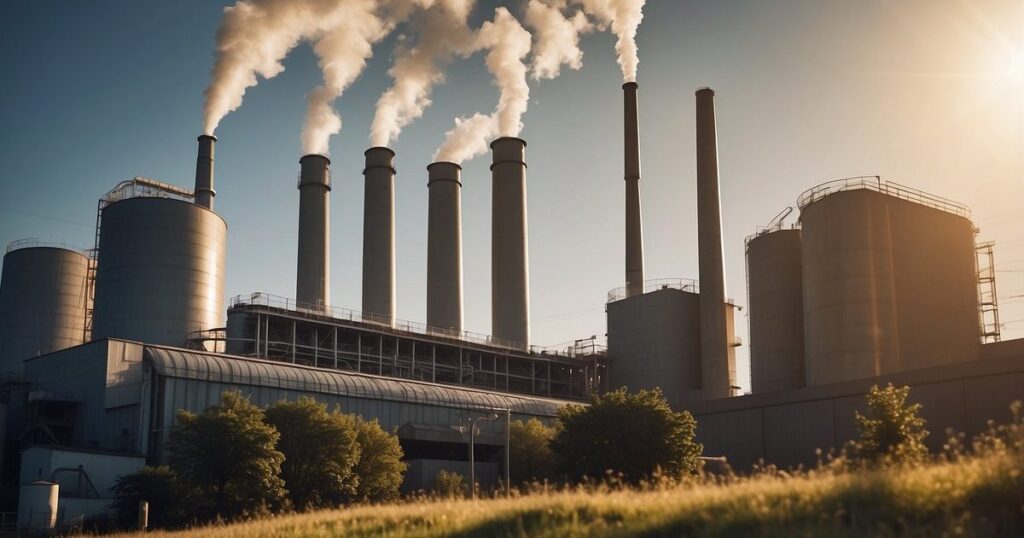
Your understanding of the environmental and economic implications of CO2 emissions from the beverage industry requires considering greenhouse gas reduction, resource management, cost factors, and industry collaborations. Key aspects involve sustainable practices and the balance between profitability and environmental stewardship.
CO2 Emissions and Greenhouse Gas Reduction
The beverage industry significantly contributes to CO2 emissions through processes such as manufacturing, refrigeration, and transport. Embracing technologies like carbon capture and transition to renewable fuels is vital.
Innovations in packaging materials, such as moving from polyethene terephthalate (PET) to glass bottles, reduce emissions. The Netherlands exemplifies leadership in net-zero and carbon-neutral initiatives. Reductions in greenhouse gas emissions support global sustainability goals and lessen the impact of climate change.
Impact on Resource Management
Efficient resource management is crucial for sustainability. From water usage to energy consumption, every aspect of production impacts the environment. Modern facilities use advanced technologies to minimise waste and maximise recycling, supporting a circular economy.
Investing in biomass energy and optimising cooling systems reduces the carbon footprint. Proper management of ingredients and raw materials ensures product quality while minimising environmental degradation.
Cost Factors and Profitability
Environmental initiatives influence cost structures and profitability. Transitioning to eco-friendly methods often requires significant investments in new technologies and infrastructure upgrades.
Initiatives like improving transport logistics and adopting sustainable chemicals can lead to long-term economic benefits by reducing operational costs. However, balancing these investments with maintaining competitive pricing remains a challenge for the industry.
Collaborations and Industry Initiatives
Collaborations within the industry, such as those promoted by the Beverage Industry Environmental Roundtable (BIER), foster innovation and shared best practices. Collective efforts in carbon capture and reducing CO2 emissions amplify positive environmental impacts.
Industry-wide initiatives in quality, eco-friendly packaging, and supply chain optimisation also enhance public perception and compliance with regulatory standards. Engaging the public and encouraging contributions towards a sustainable future ensures continued progress towards climate goals.
Frequently Asked Questions
Understanding the economic impact of CO2 emissions and usage in the beverage industry is vital due to its significant role in global emissions and production processes. Here’s a closer look at some of the key questions surrounding this topic.
What proportion of global CO2 emissions is attributable to the beverage sector?
In 2021, beverage companies emitted 1.5 billion tons of CO2 equivalent, which accounted for approximately 3.8% of all global CO2 emissions. The dairy industry alone contributed 45% of the total emissions from the beverage sector.
How does carbon dioxide usage influence beverage companies’ production costs?
The need for CO2 in beverage carbonation directly impacts production costs. Companies have to invest in capturing, purifying, and storing CO2, which adds to operational expenses. Any disruptions in CO2 supply can lead to increased costs, affecting profit margins.
In what way does CO2 scarcity affect the beverage industry and its consumers?
CO2 scarcity can lead to production slowdowns or halts, affecting the availability of carbonated beverages. This can result in higher prices for consumers and potential losses for companies due to decreased sales and deferred production schedules.
How does the utilisation of CO2 in beverages align with sustainability and environmental goals?
Beverage companies are turning to sustainable practices such as CO2 recovery and renewable energy sources to lower their carbon footprint. These efforts aim to align with broader environmental goals and reduce the overall environmental impact of beverage production.
What innovations are emerging to reduce the carbon footprint in carbonated drink manufacture?
Innovations like brewery CO2 recovery systems allow for capturing and reusing CO2 produced during fermentation. Energy-efficient production techniques and the use of renewable energy sources are also being adopted to enhance sustainability.
Could you explain how the demand for CO2 in the beverage industry impacts its supply chain?
High demand for CO2 in the beverage sector places pressure on the supply chain, requiring reliable sources and efficient logistics to maintain a steady supply. Disruptions in the CO2 supply chain can lead to production challenges and increased costs, necessitating robust contingency planning.
